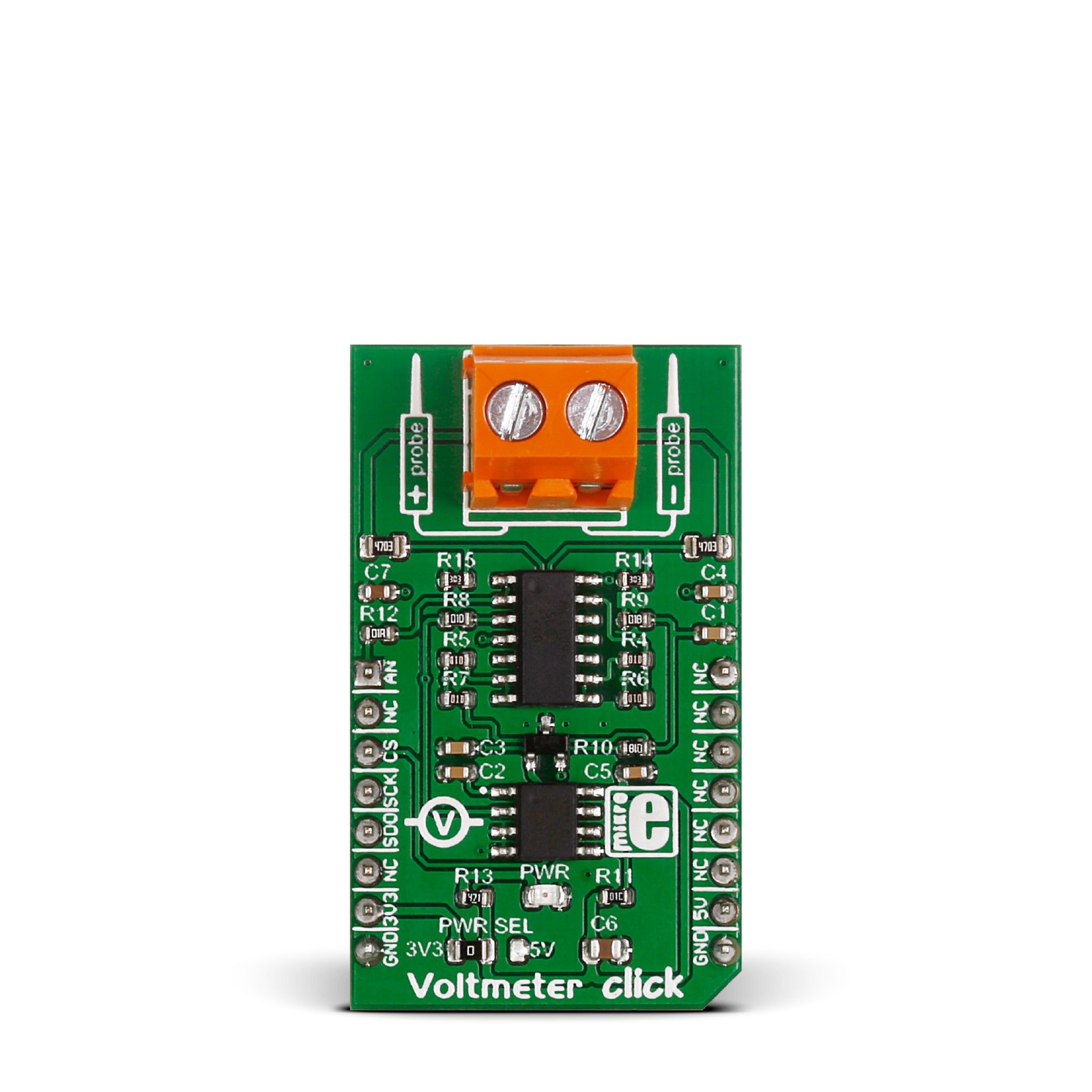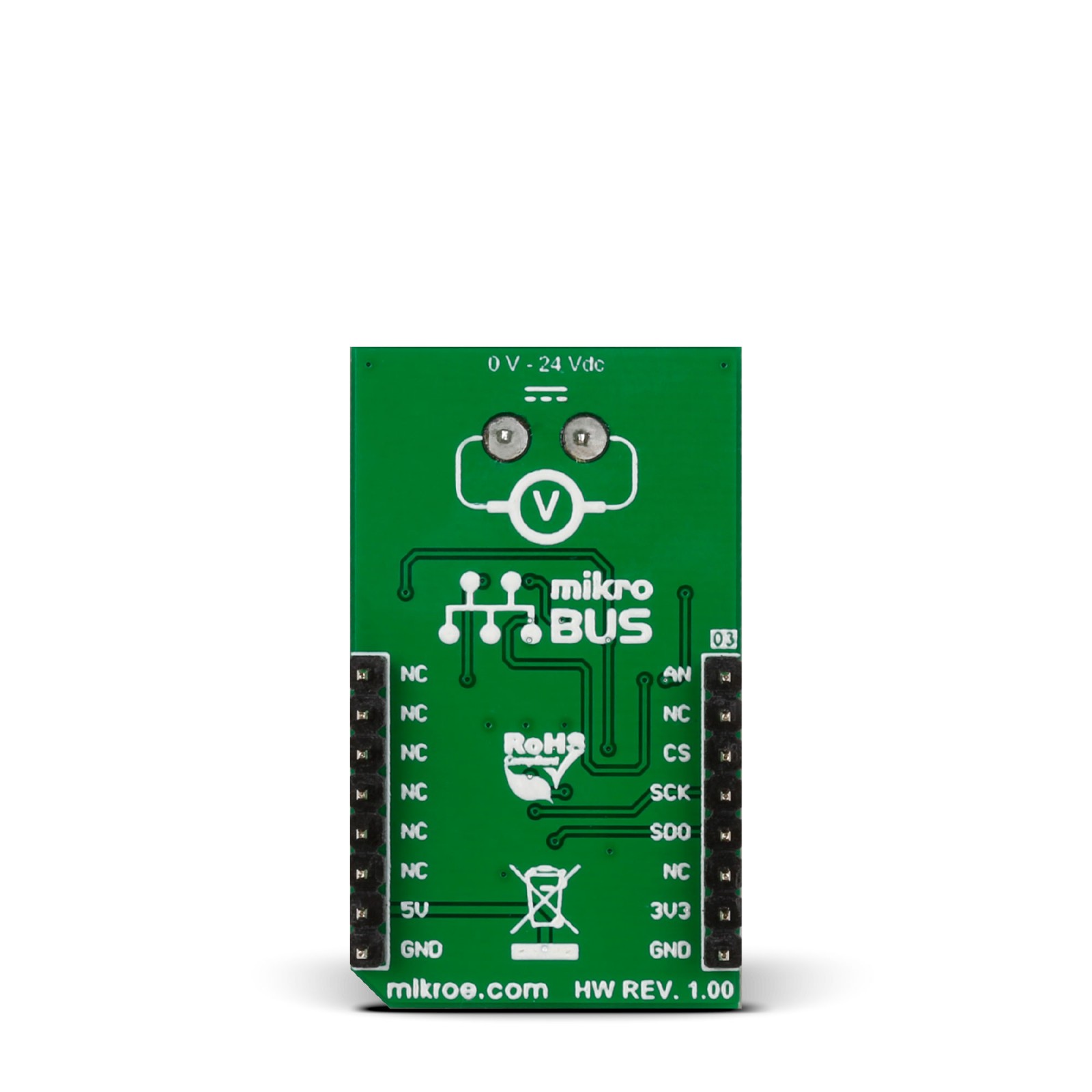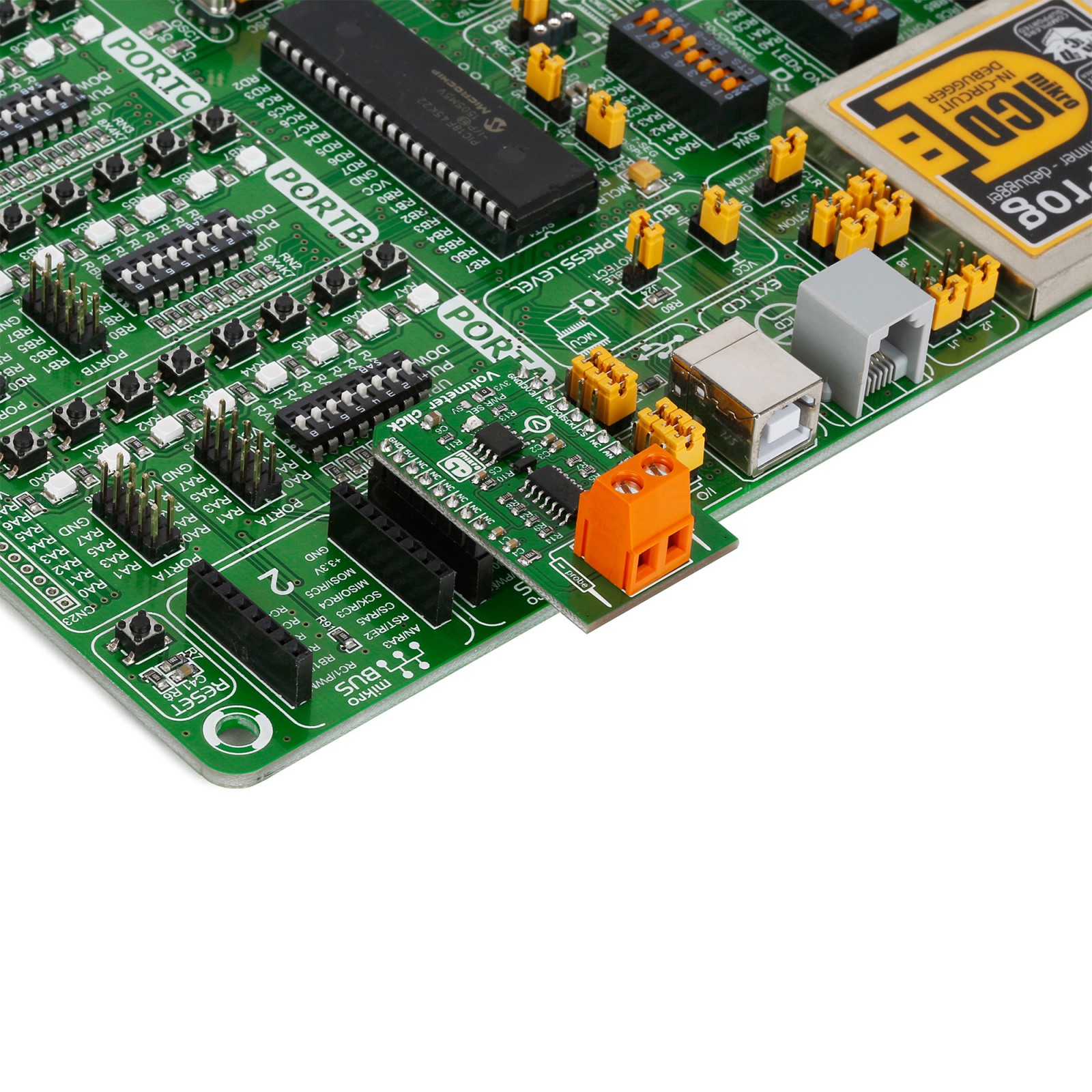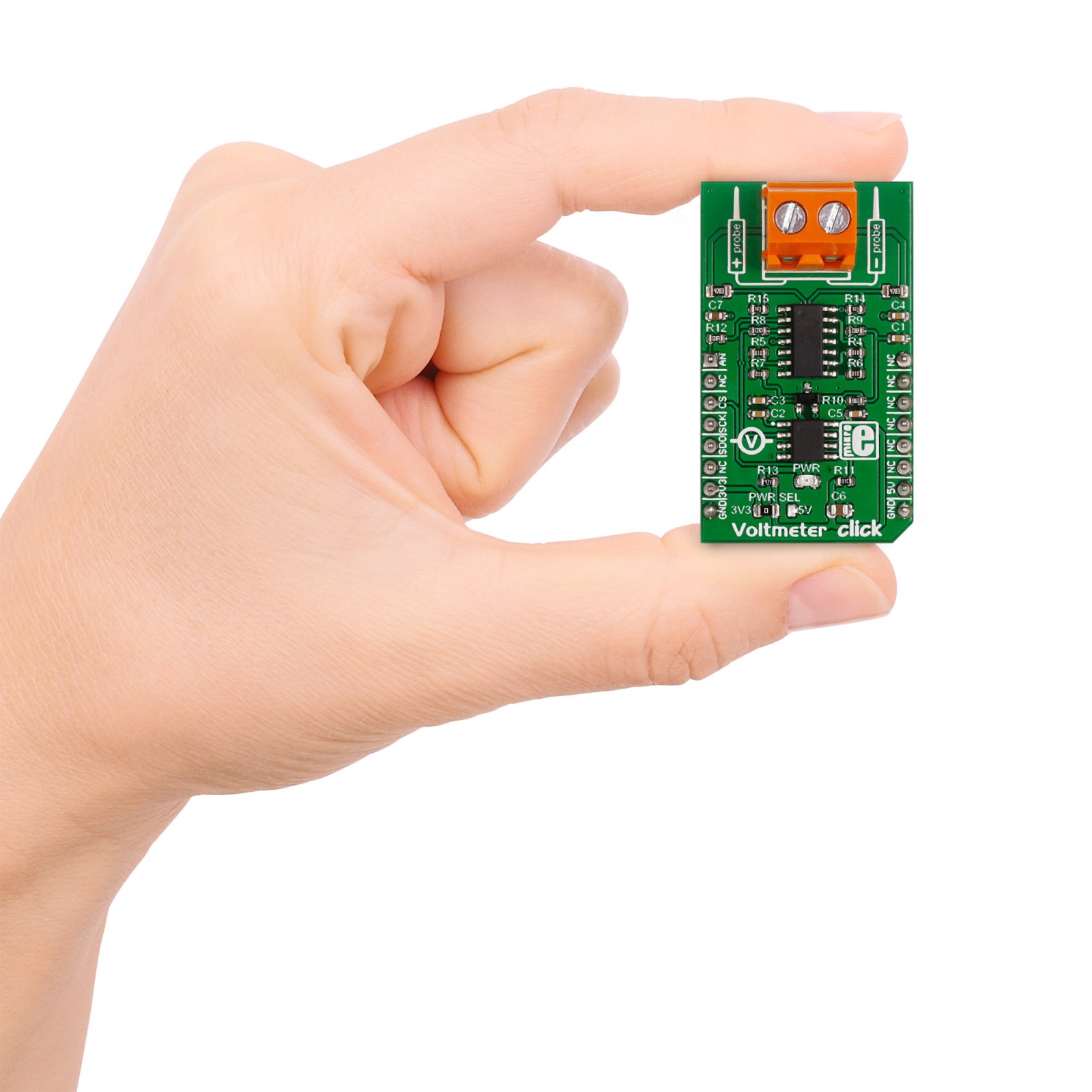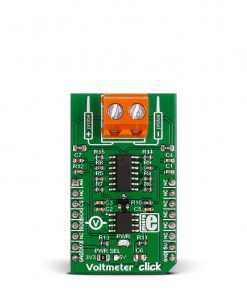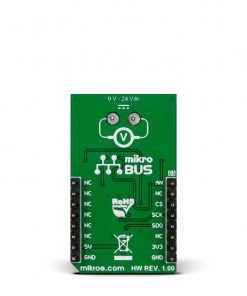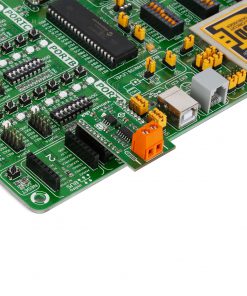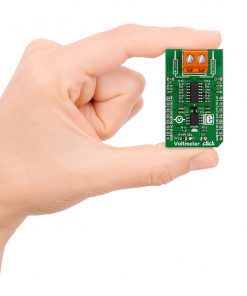Voltmeter Click
R540.00 ex. VAT
Voltmeter Click is a compact add-on board with circuitry for measuring the voltage in an external electric circuit. This board features the MCP609, a micropower CMOS operational amplifier from Microchip. The Voltmeter Click is designed to measure Direct Current only and has a measurement range from 0 to 24V, with the possibility to measure both positive and negative charges. Two onboard screw terminals (probe+ and probe-) connect this Click board™ with an external circuit for measurement. This Click board™ makes the perfect solution for the development of applications based on voltage measurements, tools, and more.
Voltmeter Click is supported by a mikroSDK compliant library, which includes functions that simplify software development. This Click board™ comes as a fully tested product, ready to be used on a system equipped with the mikroBUS™ socket.
Stock: Lead-time applicable.
| 5+ | R513.00 |
| 10+ | R486.00 |
| 15+ | R459.00 |
| 20+ | R441.72 |

